Is paddle boarding hard? Many people may wonder when they first approach the sport. If you’re among them, don’t worry. This article will provide a full answer and tips to make your learning process easier.
So, how hard is stand up paddle boarding? Let’s dig into the answer right below!
Is Paddle Boarding Hard for Beginners?
No, paddle boarding is not hard for beginners. With the right guidance, anyone may become an experienced paddler in a matter of hours. Stand-up paddle boarding is an easy, fun, and therapeutic water sport suitable for all ages and fitness levels. The sport provides a full-body workout, promotes balance and endurance, and offers therapeutic benefits.
4 Benefits of Paddle Boarding for Beginners
Paddle boarding is a sport with numerous benefits to your physical and mental health. Here are some major advantages:
1. Full Body Workout
Since paddle boarding engages numerous muscle groups at once, it’s a refreshing and efficient alternative for lengthy gym exercises. Stand up paddle boarding focuses mostly on the upper body when moving across the water. Leg muscles and core stabilizers are needed to maintain balance when navigating different types of water. This dynamic balancing act is great for increasing endurance and muscle strength.
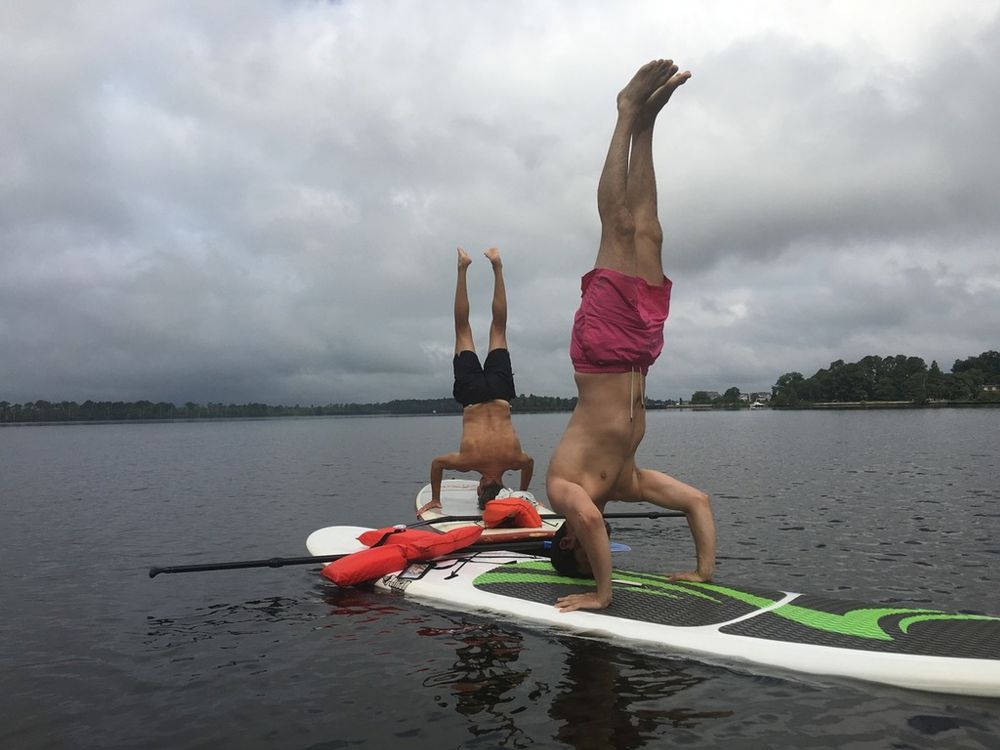
SUP includes exercises for the back, arms, legs, shoulders, and core. Every stroke engages a vast array of upper body muscles while balancing on the ever-shifting board, which keeps the legs, hips, and core continually working. If you want to get the most out of your water exercises, consider paddle boards built for maximum fitness.
2. Enhance Cardiovascular Health
Frequent exercise is associated with improved cardiovascular health, and those who often lead physically active lifestyles experience reduced rates of coronary heart disease (CHD). This is especially true in paddle boarding, which not only raises heart rate during the exercise but also keeps it elevated, guaranteeing a vigorous cardiovascular workout.
More than just a strength-training activity, stand up paddle boarding is a complete cardiovascular routine that raises heart rate through constant paddling. Regular cardiovascular exercise is essential for maintaining cardiovascular health and lowering the risk of heart disease. The cardiovascular benefits of paddle boarding are similar to those of cycling or aerobics, which makes it a great choice for improving heart health and preventing cardiovascular diseases.
3. Strengthen Core Muscles
Reducing back discomfort, avoiding injuries, safeguarding internal organs, and enhancing posture all depend on a strong core. Since core muscles serve as the body’s stabilizers, stand up paddle boarding is an enjoyable and practical method of building core strength. Learning good balancing on a stand up paddle board is an excellent way to work on these muscles. Your core muscles will be stronger without you knowing it.
4. Reduce Stress
Paddle boarding is a unique way to disconnect from daily stressors and engage in a sensory-rich setting. Being outdoors and surrounded by water can reduce the body’s stress hormone and cortisol levels and improve mood.
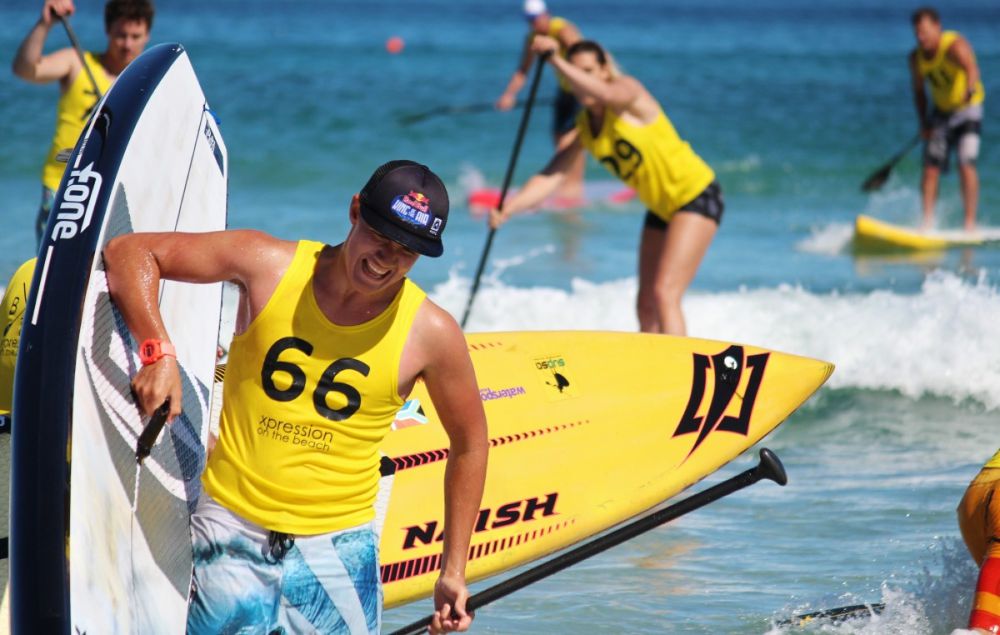
Paddle boarding is also a meditative activity with steady strokes encouraging a peaceful, rhythmic mood. This technique aids in mental stillness and maintains focus on the presence, which is much like mindfulness when you need to clear your thoughts of distractions and worries.
In addition to providing an escape from everyday life, SUP promotes a higher sense of well-being. Exercise, which naturally releases endorphins, combined with the tranquil setting of open-water paddling, produces a powerful cure for stress.
How to Make Paddle Boarding Easy?
Paddle boarding is not too hard to learn. Our guidelines below will help you feel less challenged when starting your water excursion.
Choose the Right Size and Type of Board
You should choose the appropriate type and size of paddle board for your water activity based on its length, width, and weight capacity. Novices prefer All-Around SUPs, which are usually 10’6″-11′ 6″ long and 31 “—35” wide. These boards are quite stable for practicing balance.
Boards designed for beginners usually have a wider deck, a larger nose and tail, and other functions such as grab grips, fin setup, and bungee systems. You should familiarize yourself with these features to ensure a seamless experience.
Choose the Waterway
How hard is paddle boarding? The level of difficulty can depend on the waterway you choose. Selecting the appropriate water area provides a smoother experience, especially for beginners. You should go for calm, sheltered waters with little to no crowds so you can master the technique without the extra difficulties caused by waves, winds, and congestion.
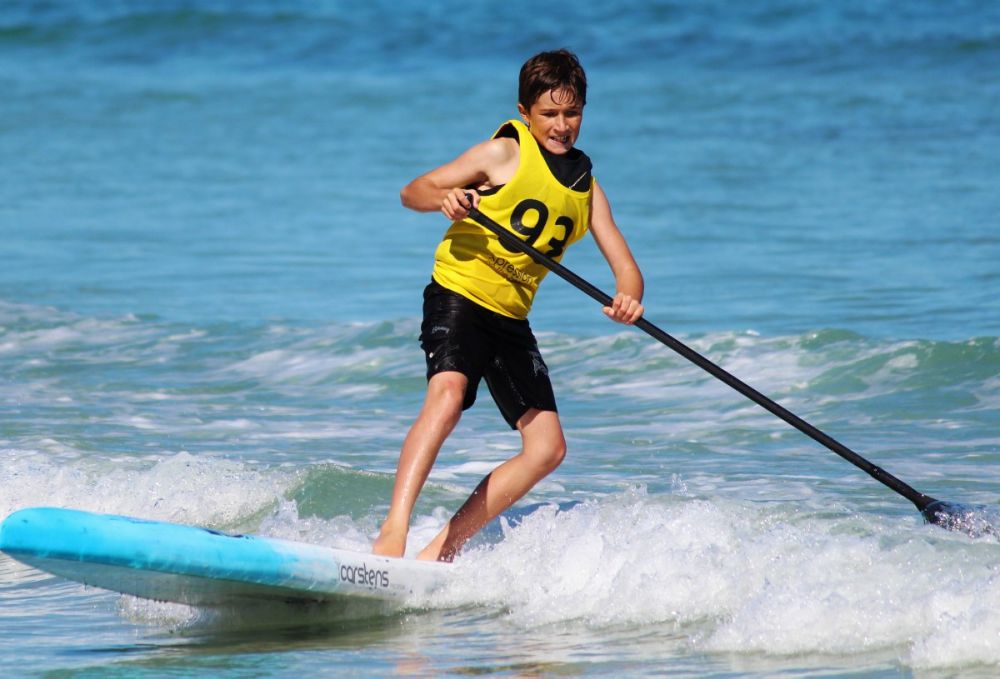
One of the best options is lakes since they don’t have high waves, strong currents, or quick flow like rivers or oceans. However, you should still be prepared for freezing weather and winds in this calm water.
Thus, before going on your first paddle, if you’re not sure about the conditions, ask around. Skilled paddlers or people working at a paddle board rental store may offer important advice.
Catching waves may pose a challenge for new paddle boarders. Paddling manually can be difficult and make you tired faster, thus negatively affecting your enjoyment of the moments. However, Boost Fin can lift the heavy job. This electric motorized surfboard fin will help you catch a wave easily, just like flying on the water.
Choose the Correct Way to Paddle
Is paddle boarding easy? Yes, it can be easier if you paddle properly. When using a SUP, ensure the blade is completely submerged and the logo is facing outward by dipping the shaft of the paddle into the water behind you. If you want to turn the board, you need to dip the blade in the water and pull it back.
Choose the Correct Posture and Stance
Proper posture and stance will help you create efficient and effective strokes. You should generally maintain a firm balance by keeping your feet apart and your knees slightly bent.
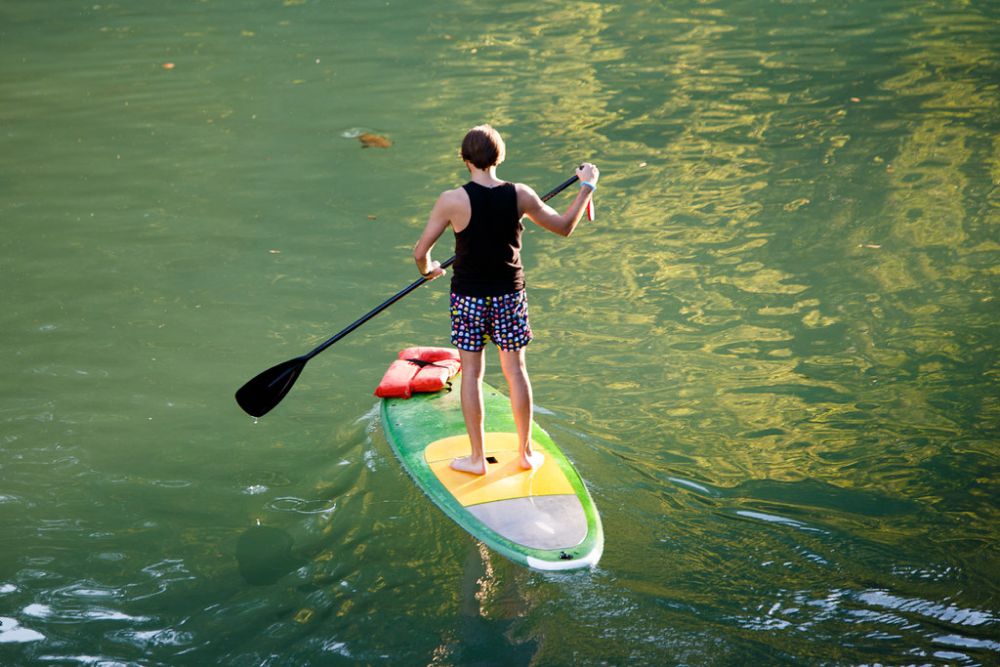
Remember to keep a strong base and lean forward while paddling to gain momentum during your water excursion. Once you understand the mechanics of holding and moving the paddle, you can have better posture, decrease the chance of exhaustion, and enjoy the activity more.
How to Make Paddle Boarding With Friends More Awesome?
Paddle boarding will be more fun when you have more friends joining you.
When standing on the paddle board with your companion, exchange clear messages and coordinate your strokes. Begin in a kneeling position or take a seat, then gradually increase to a standing position. A rhythm takes time, so be ready for falls and laughs. Make sure there is just one paddler because it might be challenging to synchronize strokes, which can lead to dangerous situations.
There’ll be no issue if you want to bring your pet on the paddle board. However, there are a few things to do to ensure the safety of your and your furry friends. Give your dogs a few days to get used to standing on the paddle board on land before taking them out on the water.
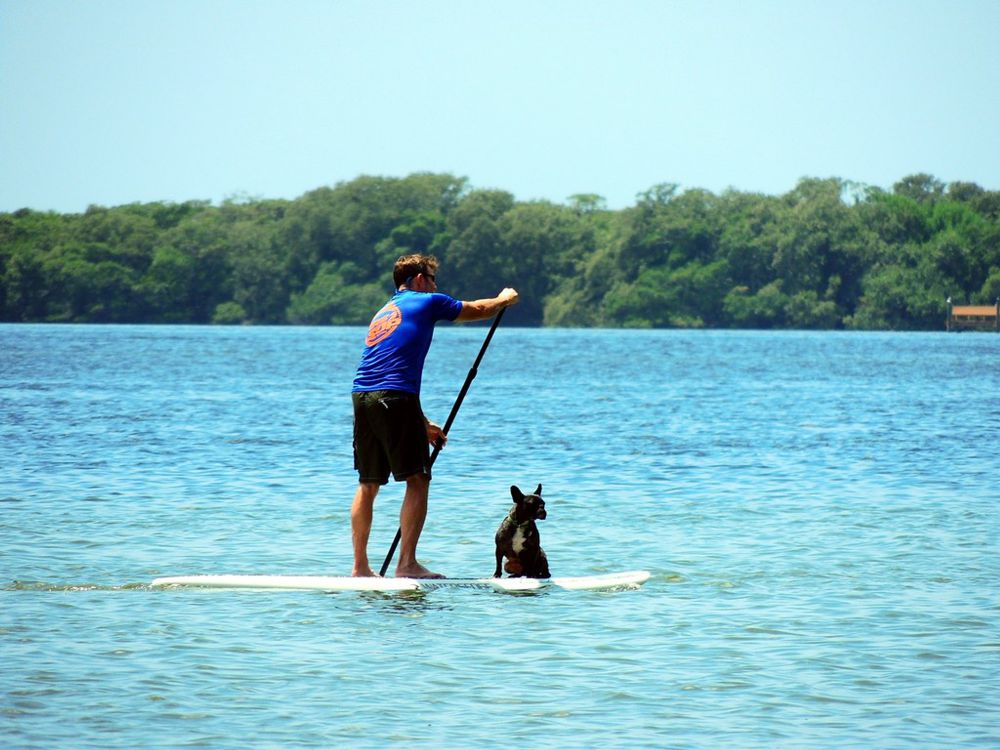
Ensure they have a secure personal flotation device (PFD) for safety and teach them how to balance and stay securely on the board.
Paddle Boarding Tips for Beginners
Is paddle boarding hard? Being good at the sport is not too difficult. However, if you’re a beginner, following the tips below can help you avoid common mistakes and learn faster.
- Ensure the branding on your SUP paddle is facing away from you and the blade is fully submerged in the water.
- Remember proper posture and stance are crucial to guarantee that you have the best stroke possible and it will advance your paddling technique.
- Similar to riding a bike, you will be more stable on your paddle board if you have greater momentum.
- Whenever you are paddling, never glance down. Doing so can cause you to lose your balance and possibly fall off your SUP.
- Avoid leaning too far forward when using a SUP.
- In a standing position, try to stand with your knees unlocked and erect.
- If you find it challenging to stay balanced when paddling, focus on anything on land or in the water and start moving in that direction to assist you in gliding across the water.
- You should push backward and immerse the paddle’s blade in the water to turn your board. Before doing so, ensure you place your feet in a comfortable place.
If you have any difficulty on the water, consider using Boost Fin. It is a revolutionary device designed to enhance your paddle boarding experience with motorized assistance. It allows paddle boarders to reach speeds of up to 5 mph, reducing the effort of paddling. The device features an electric fin motor that can hook up to any board within 5 minutes – including SUPs and kayaks. It provides a powerful thrust, equivalent to the force of 15 people rowing a canoe, which helps you cover more distance with less fatigue.
The Boost Fin has a long battery life to support an average paddling session of 60-90 minutes. A user-friendly controller allows paddle boarders to control their boost, with a long press delivering a sustained boost and a quick tap providing a short burst of speed.
Catch More Waves Effortlessly
Is paddle boarding hard? This article has cleared up your doubts about the difficulty of this sport. In general, paddle boarding is versatile and is not difficult for a beginner to start and follow along. It’s always better to maneuver your paddle for the first time on the tranquil waters. And remember to apply our tips above for better performance.
If you feel tired or challenged to catch waves, contact Boost Surfing for more information about our Boost Fin, an electric fin motor for your SUPs. It will help you surf in a totally new way and bring a life-changing experience.


Compartilhar:
Where To Surf in June: Top 14 Places For Summer Surfing Trip